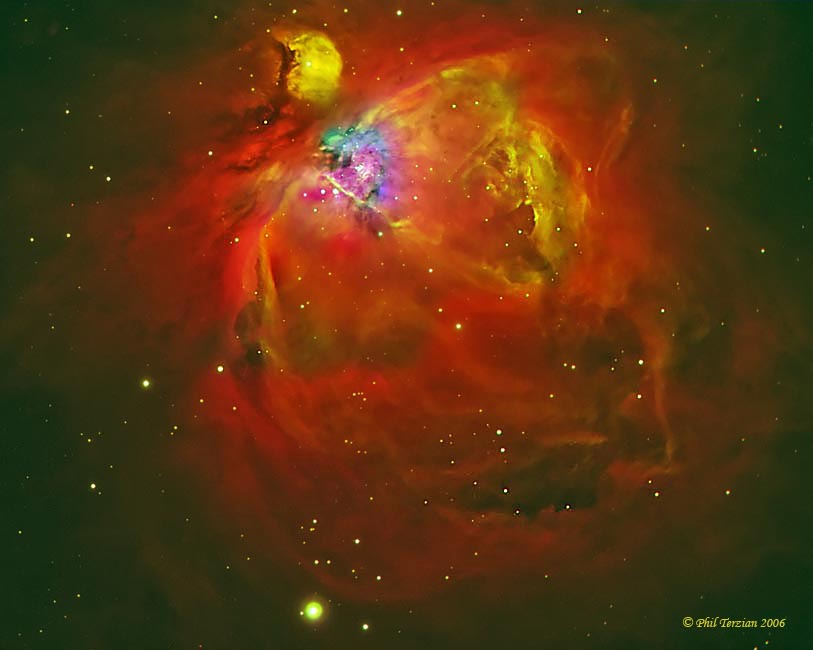
click on the photo above for a higher resolution image
M42, The Orion Nebula

click on the photo above for a higher resolution image
The Orion nebula is the brightest star forming region visible
from northern latitudes.
The young central stars are formed in this stellar nursery by the condensation
of
gas and dust under the pull of gravity. The bright stars then ionize the
surrounding
nebula making it visible.
The object is a challenge to photograph because it has both faint nebulosity to
the
south, east and west and a very bright central core. So it is necessary to
take very
short exposures (2 minutes) to correctly expose the bright areas and very long
exposures
(40 minutes x3) to bring out the detail in the faint areas. The layers are
then combined
on the computer using photo editing software.
Date: February 8-14, 2006
Location: Cupertino, CA
Scope: Takahashi FS102 @ 600mm
Guiding: Vixen 60mm refractor with SBIG ST-4
Mount: Losmandy G-11
Camera: SBIG ST2000XM
Filters: Custom Scientific in FLI CFW
Exposure details:
Hydrogen Alpha for red (3x40min, 3x20, 3x2)
OIII for blue (3x40, 3x2)
Sulfur for green (3x40)
Processing: MaximDL for calibration, alignment and combining.
PSCS for layering in the Trapezium region and final processing